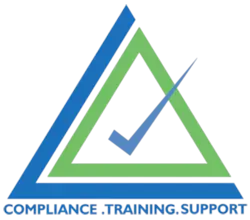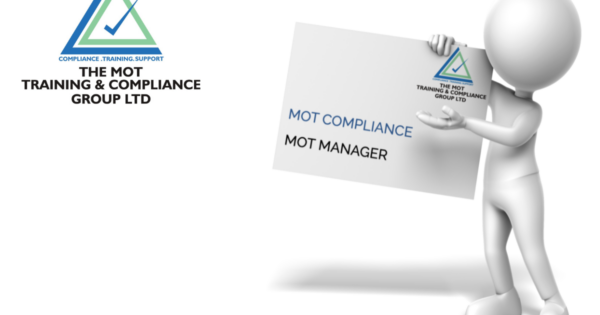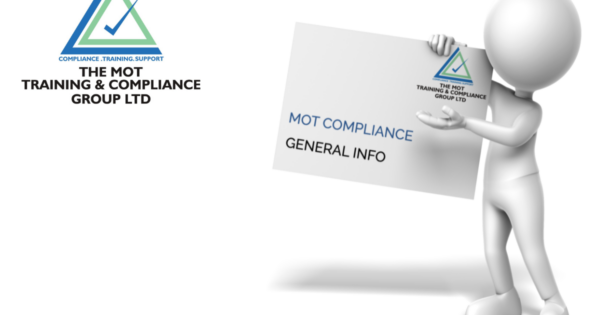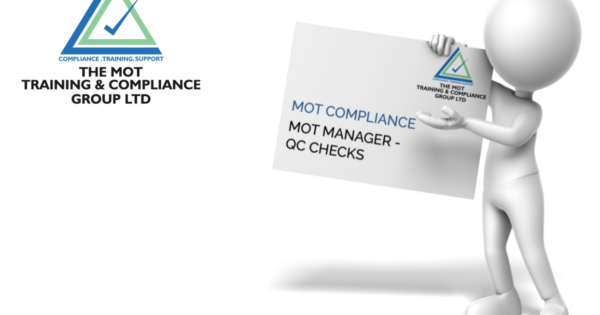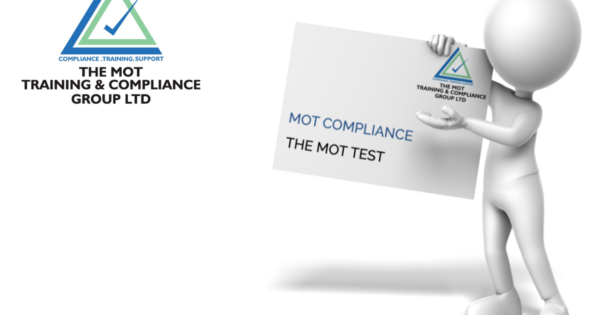MOT TRAINING AND
MOT COMPLIANCE FAQ’s
YOU ASK, WE ANSWER
Showing articles in 'MOT Manager - QC Checks'...(« back to knowledgebase)
Showing 20 articles.
Absolutely! The MOT industry changes faster than a DVSA update email lands in your inbox. From new vehicle tech to updated testing criteria, there’s always something to keep on top of. A trained/qualified MOT Site Manager stays ahead of those changes and helps your whole team adapt without disruption. They know how to lead, how to mentor testers, and how to spot potential issues before they become DVSA problems. It’s not just about compliance, it’s about confidence. When your MOT Site Manager is properly trained, your whole operation runs smoother, your testers feel supported, and your customers trust you more. Simply put: investing in training isn’t a cost – it’s an upgrade to your business. (Read More)
Think of a qualified MOT Site Manager as the conductor of your workshop orchestra. Without one, things can quickly slide into chaos – double-booked appointments, delayed tests, missed calibration dates, and stressed-out staff. With a qualified MOT Site Manager in place, everything runs like a well-oiled machine. Bookings are balanced, workflows make sense, testers know what’s expected, and any hiccups get sorted before they snowball. That means fewer headaches, fewer comebacks, and a smoother day for everyone, including your customers. You can spend more time doing what you do best: testing cars, fixing faults, and keeping the wheels turning (literally). (Read More)
We get asked this one a lot, especially by smaller garages. On paper, it might look like a qualified MOT Site Manager just handles admin and compliance – things you could probably juggle yourself between tests, right? In reality, a qualified Site Manager doesn’t just shuffle paperwork. They’re the glue that holds your testing station together. They make sure your records, quality checks, and calibration logs are watertight so that when the DVSA walks in (and they will), you’re not panicking! They keep your testers sharp, your equipment spot-on, and your customers happy. In short, they protect your licence, your reputation, and your sanity. So yes, technically you could manage without one, but why take the risk when the cost of getting it wrong can shut your site down? (Read More)
It might feel that MOT ramp photography is a waste of time at first but it’s actually about making the MOT Test more secure, not more stressful. The photo is simply proof that the vehicle was physically present and being properly inspected. It supports the MOT Tester, the garage, and the system as a whole. In fact, garages involved in the DVSA trial have said that once it becomes part of your MOT Test routine, it only takes a few extra seconds. You shouldn’t notice it slowing things down once you get into the swing of things. In return, you’re helping protect the reputation of MOT Testers who take pride in doing things right. (Read More)
If the DVSA finds minor non-compliances, there’s no need to panic. The threshold for disciplinary points has been raised from 30 to 40 points, which means small issues can often be resolved with advice, training, or support rather than formal disciplinary action. That said, it’s still crucial to have solid systems in place for things like quality control and staff management – they’ll still be looking at your overall set-up and whether you’re running your site in line with the MOT Guide. (Read More)
Not anymore! DVSA site visits are no longer needed in some instances. If your MOT testing station has a solid track record with the DVSA, you might be offered a VTS Self-Assessment instead of a physical site visit. That means no phone interviews or inspectors arriving on-site. Instead, the AEDM (Authorised Examiner Designated Manager) will receive a form by email to complete and return within 14 days. It’s a great incentive to stay compliant – and a much less disruptive process! (Read More)
A DVSA site audit is a review of your MOT testing station to ensure you’re meeting all the required compliance standards. The good news is that as of April 2025, the process has been streamlined. Rather than diving deep into every part of your operation, DVSA now focuses on key compliance checks. They’ll look at things like whether the authorised entity is still running the site whether your equipment is in good working order if vehicles being tested are actually on-site. They’ll also reinspect a recently tested vehicle to make sure assessments are being carried out properly. It’s quicker, less disruptive, and gives the DVSA more time to focus on helping sites that may be struggling. (Read More)
The MOT Guide states that MOT Testing Station Quality Control (QC) checks: “should be carried out by a person who holds a Level 2 qualification in MOT Testing or equivalent for the appropriate class and comply with the requirements for annual training and assessments. They may be designated from the list of testers at the site or use a Third Party” (Read More)
To record an MOT Testing Station Quality Control (QC) check, a VT29 should be completed with notes and comments regarding what the QC saw/discussed with the tester. There should also be a direct reference to the Test Quality Information (TQI) report and/or the Test Log (TL) report on every check. (Read More)
In relation to how often the MOT Testing Station Quality Control (QC) checks should be carried out, the MOT Guide states: The frequency of checks may typically be expected to be 1 per tester every 2 months. However, this is based on the average garage throughput of 2 to 3 tests per day for experienced testers – so should be varied to reflect the volume of tests done or any other special circumstances – such as the experience of testers. For example, if a tester is inexperienced or doing twice the average of 2 to 3 tests per day you should consider increasing the checks to once a month. We would strongly recommend carrying QC checks for all testers on a monthly basis. (Read More)
Mistakes can be corrected but the MOT Tester must follow the guidance laid down by the DVSA in The MOT Guide Section H. Unjustified changes could constitute fraud, dishonesty or gross negligence in the MOT testing process and you can be given 500 points which means cessation. (Read More)
No – you must not record a pass or fail MOT test result unless you have personally taken an active part in the examination of the vehicle. If you do it would come under constitute fraud, dishonesty or gross negligence in the MOT testing process and you can be given 500 points which means cessation. (Read More)
No – all equipment must be calibrated in accordance with the DVSA’s requirements and failure to do so will prevent the testing of any vehicle that requires the use of that item of test equipment. (Read More)
Print the Special Notice and ask testers to sign that they have read and more importantly, understood the content. Where appropriate, discuss with the Special Notice with the MOT Testing team and talk about how they are going to implement it. (Read More)
To conduct a quality assurance check, either closely observe a full MOT test being carried out or re-check a vehicle just before the MOT tester signs off. Whilst making your observations you should make notes on the VT29 and then discuss these notes with the tester at the end. Agree any actions that may be required and both parties to sign off. (Read More)
Any qualified MOT tester can carry out a Quality Control check. (Read More)
Have a procedure and keep good records to reassure the DVSA that you are doing Quality Control (QC) checks correctly. Use the second page of the VT29 document, this has all the details of the MOT tester and who the tester is printed at the top of the page. There is a large blank space for the Quality Controller to add their comments/observations of the test/tester. Both parties should sign this document that they agree on the written notes. Keep these documents for 12 months. Having detailed notes rather than “good test” or similar will go a long way to reassuring DVSA that you are diligently carrying out your mandatory QC checks. (Read More)
Whilst it is no longer a requirement to record Quality Control (QC) checks on the MOT system a DVSA Inspector will want to see evidence of the QC checks that have been conducted. The best paperwork for this is the second page of the VT29, it contains all the test information and has a large blank space for the QC to record his comments and observations of the test/tester they are checking. (Read More)
VTSs now use many different approaches for quality management at their sites. For example, some AEs now use third parties and software to advise them. Whatever a site uses there needs to be evidence of what they have done to put in place the necessary adequate systems for the management of the quality of testing at their garage or garages. More information can be found in The MOT Guide, B6 (Read More)
The frequency you should carry out a Quality Control (QC) check is (typically) expected to be ONE per tester every TWO months. However, this is based on the average garage throughput of 2-3 tests per day for experienced testers. So, frequency should be varied to reflect the volume of tests done or any other special circumstances, such as a tester’s experience. For example, if a tester is inexperienced and completing one test a day, or very experienced and doing twice the average of 2-3 tests per day … you should consider increasing the checks to once a month. (Read More)
